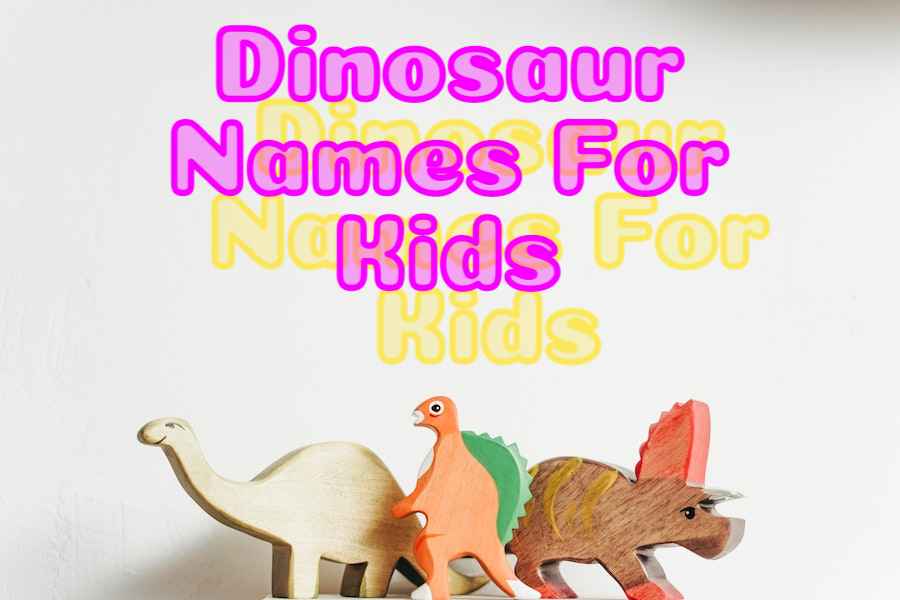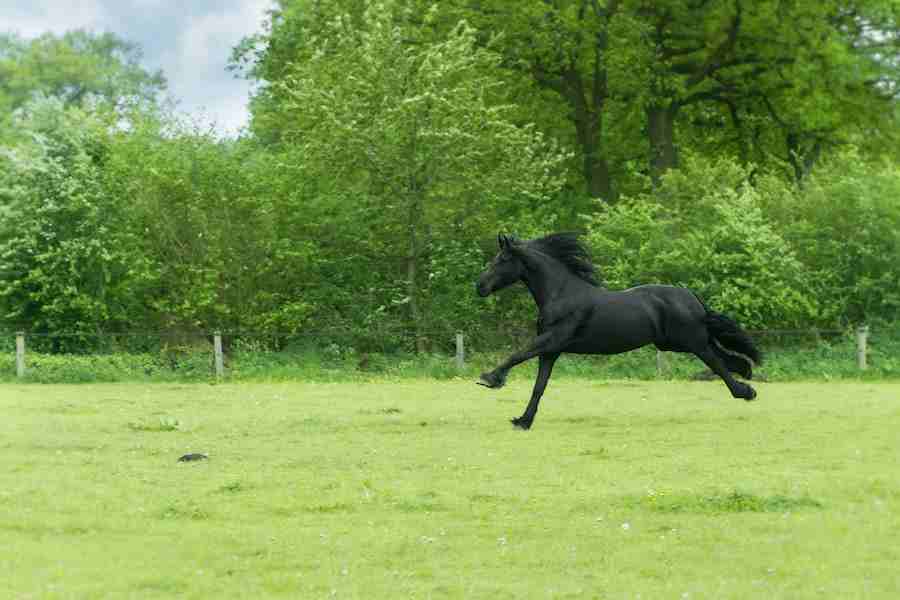Dinosaurs have captured the imaginations of kids for generations. From their impressive size to their unique features and behaviors, these prehistoric creatures continue to fascinate young minds. Learning about dinosaurs can be both fun and educational, and one of the best ways to start is by learning their names. In this article, we’ll provide a comprehensive list of dinosaur names for kids, along with a brief overview of their characteristics. We’ll also discuss the importance of learning dinosaur names and offer tips for parents and educators on how to teach them to kids in a way that is engaging and effective. Whether you’re a parent looking to share your love of dinosaurs with your child, or an educator looking for a fun way to teach language skills, this article is for you.
Why Are Dinosaur Names Important For Kids?
Learning dinosaur names is important for kids for several reasons:
- Encourages curiosity and learning: Kids are naturally curious, and learning about dinosaurs and their names can foster that curiosity and encourage a love of learning.
- Helps improve language skills: Learning dinosaur names can help kids improve their vocabulary, pronunciation, and spelling skills.
- Increases scientific knowledge: Dinosaurs are fascinating creatures that roamed the Earth millions of years ago. Learning their names and characteristics can help kids understand the natural world and the history of the planet.
- Enhances creativity and imagination: Dinosaurs are often depicted in movies, books, and other forms of media, which can inspire kids to use their imagination and creativity to learn more about these creatures.
- Provides a sense of accomplishment: Learning new things, such as dinosaur names, can provide a sense of accomplishment for kids and boost their self-esteem.
Overall, learning dinosaur names is a fun and educational way for kids to expand their knowledge, improve their language skills, and cultivate a love of learning.
Dinosaur Names For Kids
- Tyrannosaurus Rex – A large, carnivorous dinosaur known for its powerful jaws and tiny arms.
- Stegosaurus – A herbivorous dinosaur with plates on its back for protection.
- Triceratops – A herbivorous dinosaur with three horns on its head.
- Brachiosaurus – A herbivorous dinosaur with a long neck and small head.
- Velociraptor – A small, carnivorous dinosaur known for its speed and sharp claws.
- Diplodocus – A herbivorous dinosaur with a long neck and whip-like tail.
- Allosaurus – A large, carnivorous dinosaur with sharp teeth and powerful jaws.
- Ankylosaurus – A herbivorous dinosaur with a bony club on its tail for defense.
- Parasaurolophus – A herbivorous dinosaur with a distinctive crest on its head.
- Pterodactyl – A flying reptile from the dinosaur era with a wingspan of up to 33 feet.
- Compsognathus – A small, carnivorous dinosaur known for its agility.
- Iguanodon – A herbivorous dinosaur with a thumb spike for defense.
- Spinosaurus – A large, carnivorous dinosaur with a sail on its back for thermoregulation.
- Deinonychus – A medium-sized, carnivorous dinosaur known for its pack-hunting behavior.
- Brontosaurus – A large, herbivorous dinosaur with a long neck and small head.
- Archaeopteryx – A bird-like dinosaur with feathers and wings.
- Euoplocephalus – A herbivorous dinosaur with a bony club on its tail for defense.
- Coelophysis – A small, carnivorous dinosaur with long legs and a slender body.
- Baryonyx – A large, carnivorous dinosaur with a long, narrow snout for catching fish.
- Maiasaura – A herbivorous dinosaur known for its nurturing behavior towards its young.
- Carnotaurus – A large, carnivorous dinosaur with short, powerful arms and a horned head.
- Oviraptor – A small, omnivorous dinosaur with a distinctive beak.
- Therizinosaurus – A herbivorous dinosaur with long, curved claws for defense.
- Edmontosaurus – A herbivorous dinosaur with a duck-like bill for grazing.
- Dilophosaurus – A medium-sized, carnivorous dinosaur with distinctive crests on its head.
- Coelacanth – A large, prehistoric fish that lived alongside dinosaurs.
- Quetzalcoatlus – A giant flying reptile from the dinosaur era with a wingspan of up to 36 feet.
- Corythosaurus – A herbivorous dinosaur with a distinctive crest on its head.
- Mosasaurus – A large, aquatic reptile from the dinosaur era.
- Giganotosaurus – A large, carnivorous dinosaur with serrated teeth and sharp claws.
Popular Dinosaur Names For Kids With Meanings
- Tyrannosaurus Rex – “tyrant lizard king”
- Stegosaurus – “roofed lizard”
- Triceratops – “three-horned face”
- Brachiosaurus – “arm lizard”
- Velociraptor – “swift seizer”
- Diplodocus – “double-beam”
- Allosaurus – “different lizard”
- Ankylosaurus – “fused lizard”
- Parasaurolophus – “near crested lizard”
- Pterodactyl – “winged finger”
- Compsognathus – “pretty jaw”
- Iguanodon – “iguana tooth”
- Spinosaurus – “spine lizard”
- Deinonychus – “terrible claw”
- Brontosaurus – “thunder lizard”
- Archaeopteryx – “ancient wing”
- Euoplocephalus – “well-armored head”
- Coelophysis – “hollow form”
- Baryonyx – “heavy claw”
- Maiasaura – “good mother lizard”
- Carnotaurus – “meat-eating bull”
- Oviraptor – “egg thief”
- Therizinosaurus – “scythe lizard”
- Edmontosaurus – “Edmonton lizard”
- Dilophosaurus – “double-crested lizard”
- Coelacanth – “hollow spine”
- Quetzalcoatlus – “feathered serpent”
- Corythosaurus – “helmet lizard”
- Mosasaurus – “Meuse River lizard”
- Giganotosaurus – “giant southern lizard”
- Stegoceras – “roofed horn”
- Microraptor – “small seizer”
- Dimorphodon – “two-form tooth”
- Plateosaurus – “flat lizard”
- Heterodontosaurus – “different-toothed lizard”
- Allosaurus fragilis – “different fragile lizard”
- Iguanodon bernissartensis – “Bernissart iguana tooth”
- Othnielia – “Othniel’s lizard”
- Talarurus – “wicker tail”
- Cryolophosaurus – “cold crest lizard”
- Citipati – “funeral pyre lord”
- Torvosaurus – “savage lizard”
- Ornitholestes – “bird robber”
- Kentrosaurus – “spiked lizard”
- Compsosuchus – “pretty crocodile”
- Nodosaurus – “knobbed lizard”
- Camarasaurus – “chambered lizard”
- Suchomimus – “crocodile mimic”
- Pachycephalosaurus – “thick-headed lizard”
- Megalosaurus – “great lizard”
Cute Dinosaur Names For Kids
- Dino
- Spike
- Trixie
- Buddy
- Tiny
- Pebbles
- Petrie
- Chomper
- Ruby
- Blue
- Peanut
- Rascal
- Tilly
- Sammy
- Spot
- Bella
- Ziggy
- Olive
- Roxy
- Rusty
- Fluffy
- Fuzzy
- Gizmo
- Hershey
- Jasper
- Kit
- Lemon
- Lenny
- Leo
- Marshmallow
- Max
- Noodle
- Ollie
- Otis
- Pickle
- Poppy
- Quincy
- Remy
- Rexie
- Rocky
- Rusty
- Sassy
- Scooter
- Skye
- Socks
- Sparky
- Teddy
- Tilly
- Zippy
- Zoey
These names are perfect for young kids who love dinosaurs and want to give their toy dinosaurs a cute and playful name.
Disney Dinosaur Names For Kids No Meanings
| 1. Arlo | 7. Buck | 13. Url | 19. Zini | 25. Mertle |
| 2. Spot | 8. Bubbha | 14. Suri | 20. Placodon | 26. Zunar-J-5/9 Doric-4/7 |
| 3. Nash | 9. Butch | 15. Flia | 21. Kago | 27. Lemur |
| 4. Libby | 10. Clawhauser | 16. Aladar | 22. Baylene | 28. Dweeb |
| 5. Poppa Henry | 11. Dad | 17. Bruton | 23. Kron | 29. Neera |
| 6. Ramsey | 12. Earl | 18. Eema | 24. Forrest | 30. Yar |
Importance Of Repetition And Reinforcement
Repetition and reinforcement are important aspects of learning dinosaur names or any other skill for that matter. Here are some reasons why:
- Helps to retain information: Repetition and reinforcement help to consolidate learning in the brain, making it easier to recall information in the future.
- Builds confidence: When kids hear and say dinosaur names repeatedly, they become more confident in their ability to remember them.
- Enhances accuracy: Repeated exposure to dinosaur names helps to reinforce their correct pronunciation and spelling, reducing the chances of errors.
- Improves comprehension: As kids become more familiar with dinosaur names, they can better understand their characteristics and behaviors, which enhances their comprehension and knowledge.
- Promotes long-term learning: Learning dinosaur names is not a one-time event; it is a process that takes time and effort. Repetition and reinforcement help to ensure that this learning is long-lasting and not easily forgotten.
To ensure that kids remember dinosaur names, repetition, and reinforcement can be incorporated into daily activities such as reading books, playing games, and watching educational videos. For example, parents and educators can quiz kids on dinosaur names, use flashcards, and have them practice writing the names. By making learning about dinosaurs fun and interactive, kids are more likely to retain the information and develop a love for learning.
Conclusion
In conclusion, learning dinosaur names is a fun and educational activity for kids that can help improve their language skills, promote curiosity and learning, and enhance their understanding of the natural world. Through the comprehensive list of dinosaur names provided in this article, kids can learn about the different types of dinosaurs and their unique characteristics. Additionally, repetition and reinforcement are important aspects of learning that can help kids remember dinosaur names and develop a long-lasting knowledge of these fascinating creatures. Parents and educators can use the tips and activities provided in this article to make learning dinosaur names fun and engaging for kids, encouraging them to continue their exploration of the natural world and develop a love of learning.








